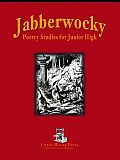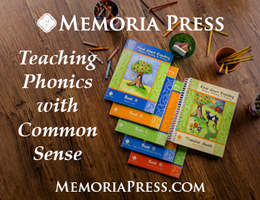Living Books Press, publishers of the Living Books Curriculum, has republished works of classic literature, biographies, and historical fiction in different formats. These books can be used with the LBC curriculum or on their own.
The Primer
They begin with The Primer, originally written by Harriette Taylor Treadwell and Margaret Free and published in 1910. Rather than the usual primer, this is a collection of well-known children’s tales such as “The Little Red Hen,” “The Gingerbread Boy,” and “Chicken Little.” There are word lists at the back of the book showing which words are introduced in each story. Two pages summarize the phonics instruction, pointing out phonetic elements on which you might concentrate in each story. This is not comprehensive phonics instruction, and stories do not constrain the word choices to those phonetic elements that have been taught. However, the selected stories use repetitive vocabulary appropriate for beginning readers. This is a collection of stories to which all children should be introduced. You can use it as a read aloud with younger children or as reading practice (and possibly some instruction) for those who have already mastered a simple reading vocabulary. (Watch for the typographical errors on pages 28-29 with “bit” instead of “bite.”)
Aesop's Fables with Scripture References
Aesop’s Fables with Scripture References, compiled and edited by Sheila Carroll, is based on the translation of the fables by V.S. Vernon Jones and illustrations of Arthur Rackham (published in 1912) . This is a lovely translation; not a dumbed-down version. For example, one fable begins, “A fir-tree was boasting to a bramble and said, somewhat contemptuously, “You poor creature, you are of no use whatever….”
Given that many of the morals taught by Aesop’s Fables are similar to those in Scripture, Carroll has added pertinent verses from Scripture using the New King James version. Verses do not follow every single fable, and sometimes there are two or three verses rather than only one.
At the end of the book are teaching tips on how to use the book, a glossary, and an alphabetical list of the morals. This edition of Aesop is a great choice for reading aloud and discussing with the entire family. It is a fairly comprehensive collection with 270 fables. The book is available in either hardcover or softcover.
Best-Loved Literary Fairy Tales
Best-Loved Literary Fairy Tales, edited by Sheila Carroll, is an unusual collection of tales from authors such as Hans Christian Anderson, J.M. Barrie, Charles Dickens, George MacDonald, and Oscar Wilde. You might recognize a few of these such as “The Pied Piper of Hamelin,” “The Real Princess,” and “The Selfish Giant,” while others of the thirteen tales might be less familiar. These particular tales were chosen primarily because they also teach spiritual lessons. Original illustrations add visual interest, and some of these might be used for picture studies in advance of reading the tale. Great for family read-aloud!
Jabberwocky Poetry Studies for Junior High
Jabberwocky Poetry Studies for Junior High is an interesting compilation and study of thirty-two poems that are now in the public domain. Sheila and James Carroll have added introductory guidelines for studying poems plus study questions following each poem. The selection is an interesting cross-section of mostly well-known poems such as “Jabberwocky” and “The Walrus and the Carpenter,” both by Lewis Carroll, “Casey at the Bat” by Ernest Lawrence Thayer, “O Captain! My Captain!” by Walt Whitman, “Fog” by Carl Sandburg, “Trees” by Joyce Kilmer, “Barbara Frietchie” by John Greenleaf Whittier, “The Rime of the Ancient Mariner” by Samuel Taylor Coleridge, and “Sir Galahad” by Alfred Lloyd Tennyson. This book is for study and appreciation of poetry rather than composition. It should take about one school year to complete using about one poem per week.
Historical Fiction by James Otis
A series of six books of historical fiction written by James Otis features children ages eleven to thirteen as the lead characters in each. Ruth of London is the story of a girl sailing to America with John Winthrop in 1630 to settle the Massachusetts Bay Colony. Richard of Jamestown features a young man who arrived at Jamestown with Captain John Smith. Mary of Plymouth arrives in the New World on the Mayflower. Peter of New Amsterdam is a story of the beginnings of New York. Stephen of Philadelphia is a story of the settlement of William Penn’s colony. Calvert of Maryland is the story of a young man and his family settling in Lord Baltimore’s colony. These books are chronicles as much as stories. The author’s intent is to show children what life was actually like with historically accurate retelling of actual historical events such as famines, deaths, and other unpleasantness. Along with the history, the stories are full of detailed descriptions of how they lived such as how they made rushlights, how they built their first homes, how they decided where to build their towns, the clothes they wore, how they created fabric, how they were educated, what religious services were like, interactions with the Indians, and discipline of troublemakers. Attitudes about Indians reflect those of earlier times. This and other content requires discussion, so I would recommend these books as read-alouds rather than independent reading.
English Literature for Young People
English Literature for Young People is a very lightly edited reprint of the original book by Henrietta Elizabeth Marshall, first published in 1909. Written by an English woman, this is a history of English literature that discusses and quotes excerpts from literature rather than an anthology of actual writings. Beginning with the earliest known literature in the British Isles such as “The Cattle Raid of Cooley,” Marshall selects representative authors and writings to illustrate the development of both the English people and their literature. Along the way she entices her readers to read the works she discusses with fascinating background information and often with explanations to help readers better understand the literature. At the end of the book, Living Books Press has added a chronological list of writers, an explanation of British money which is referenced in many places, a brief biography of H.E. Marshall, maps of the British Isles, Marshall’s original preface to the book, lists of the literary works recommended by the author chapter-by-chapter, and an index. English Literature for Young People is recommended for students ages twelve and up. (Note: I would suggest that you try to choose at least one of the works from each chapter for students to read.)











